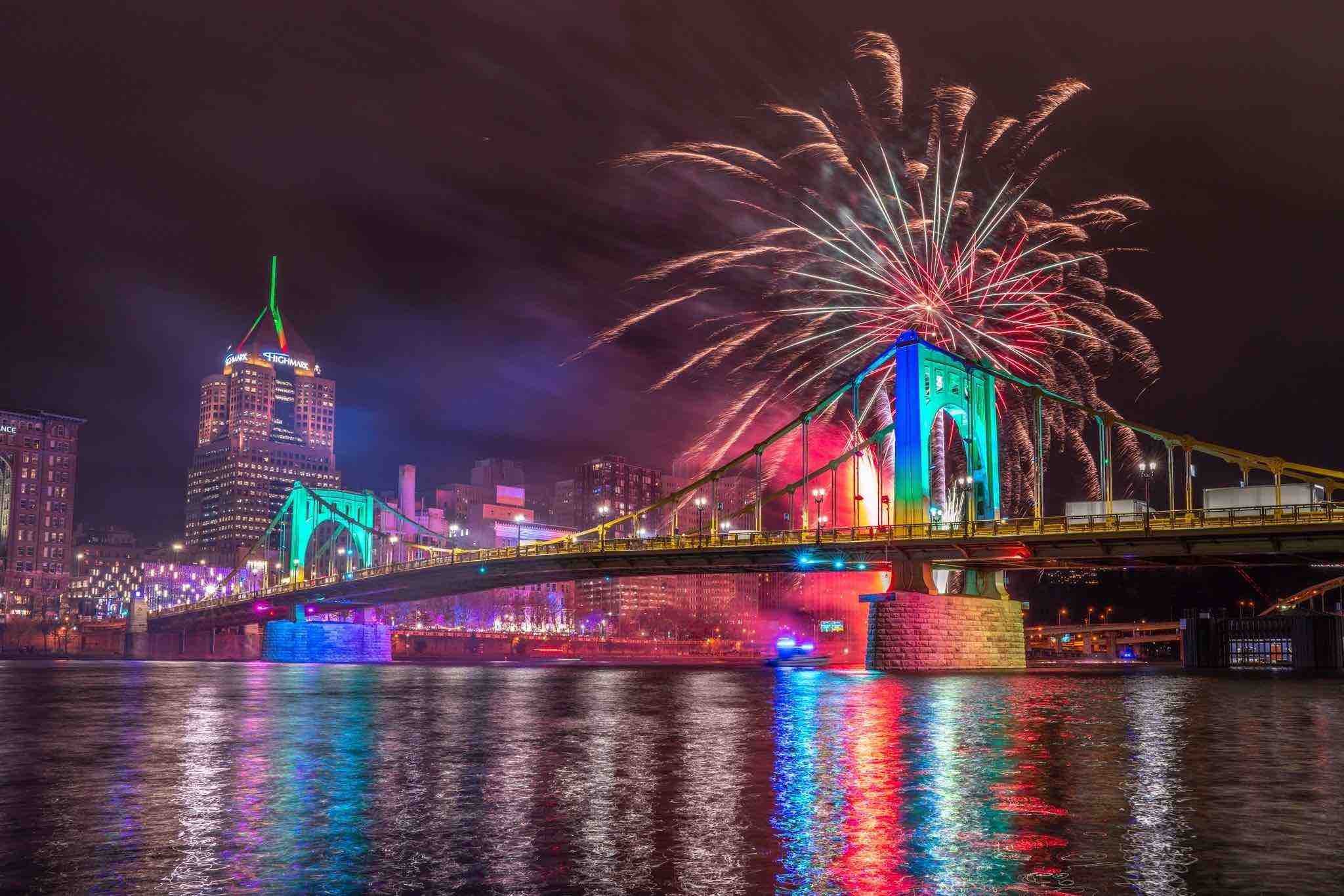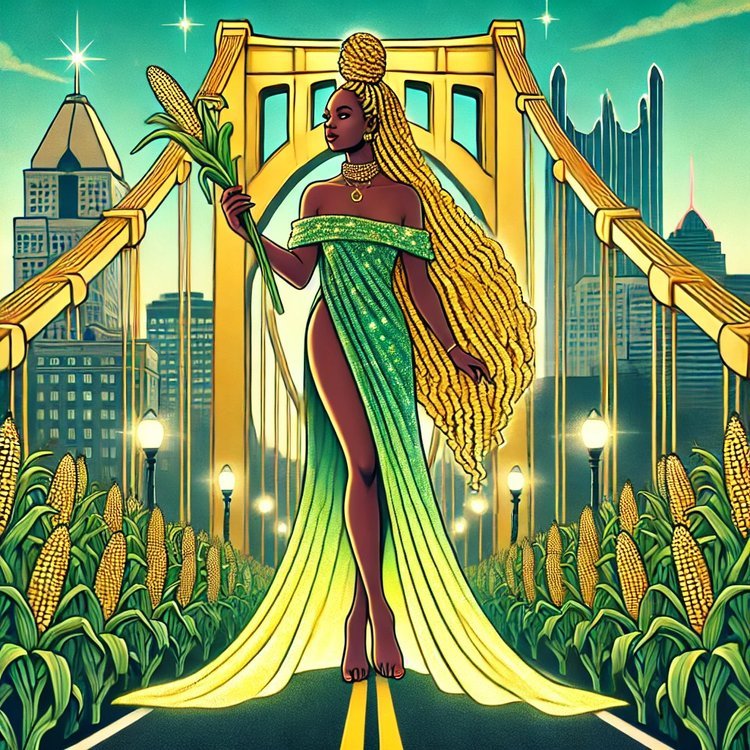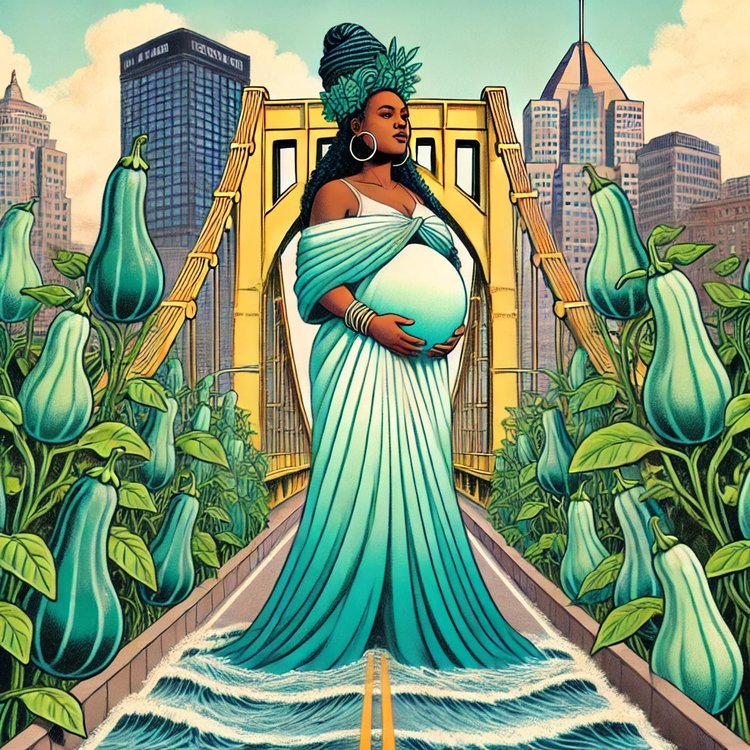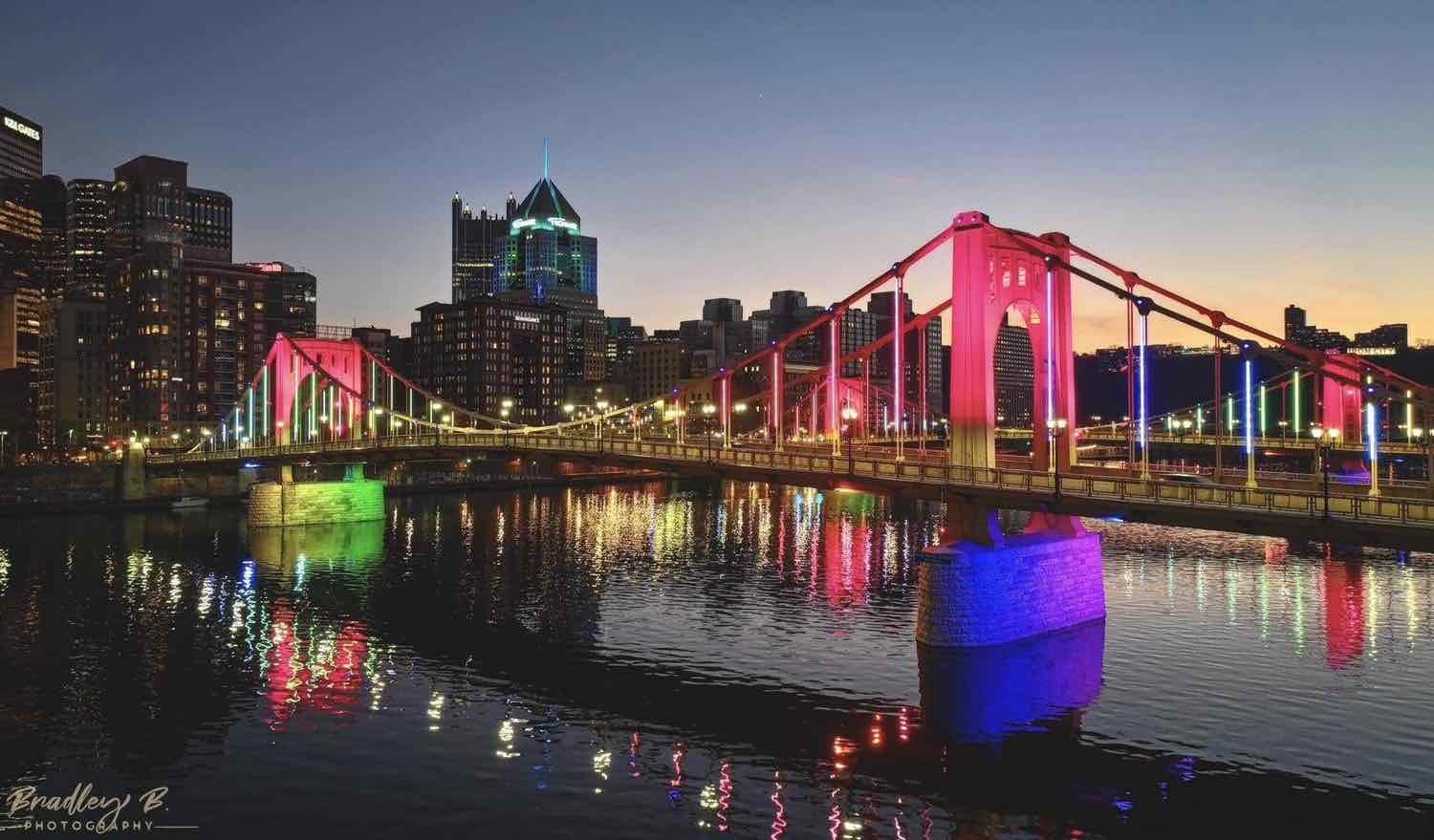
The Three Sisters (Carson, Clemente, and Warhol Bridges)
Architectural Light Design
The Andy Warhol, Roberto Clemente, and Rachel Carson Bridges
On View: November 23, 2024 – December 31, 2024
Allegheny County, with support from Shiftworks Community + Public Arts, commissioned artists Marques Redd, Mikael Owunna, and Rainbow Serpent to highlight the iconic Pittsburgh bridges with a light show. The Rachel Carson, Andy Warhol, and Roberto Clemente Bridges, known as the Sister Bridges, displayed their work The Three Sisters from November 23, 2024 through December 31, 2024.
To many indigenous cultures across North and Central America, the Three Sisters refers to their main crops of squash, maize (corn), and beans, which flourish when grown in close proximity. Across the globe from Nigeria to Brazil and Cuba, the three sisters are associated with the Yoruba goddesses Oya, Oshun, and Yemaya. The Three Sisters fuses these narratives, with each bridge representing one crop and one goddess. This dynamic light installation was 15 minutes long, and it ran on loop from sunset to midnight each night.
Watch the video below to hear the artists discuss the project.
Oya and beans on the Rachel Carson Bridge
The Rachel Carson Bridge - named after the important environmental activist - illustrates the transformative power of Oya, the goddess of storms and change, as well as the strength and supportive nature of beans. Flashes of white and blue imitated lightning, which cut through purples and reds that signified the energy of storms and the dark, rich soil nurtured by nitrogen-fixing bean plants.
Oshun and maize on the Andy Warhol Bridge
On the Andy Warhol Bridge, which is named after the renowned artist, yellows and greens were used to represent Oshun, the goddess of beauty, art, and luxury. Those colors and the upward movement of the lights also mimicked the gorgeous growth of maize plants.
Yemaya and squash on the Roberto Clemente Bridge
The wave-like movement of blue and green lights were used on the Roberto Clemente Bridge to evoke the presence of Yemaya, a humanitarian figure like Clemente and the maternal goddess of the sea. The green lights also represented the protective canopy provided by squash leaves, which keep the soil nurtured and moist.




















